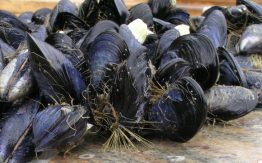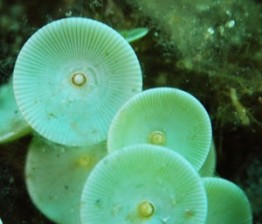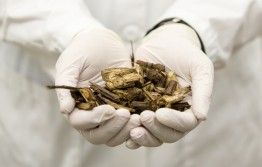New research indicates that future ocean conditions could make mussels easy targets for predators and impact the mussel farming industry.
Read more at UW Today »Scientists recommend immediate plan to combat changes to West Coast seawater chemistry
Global carbon dioxide emissions are triggering troubling changes to ocean chemistry along the West Coast that require immediate, decisive actions to combat through a coordinated regional approach, a panel of scientific experts has unanimously concluded. A failure to adequately respond to this fundamental change in seawater chemistry, known as ocean acidification, is anticipated to have devastating ecological consequences for the West Coast in the decades to come, the 20-member West Coast Ocean Acidification and Hypoxia (OAH) Science Panel warned in a comprehensive report unveiled April 4.
Read more at UW Today »A more acidic ocean will bend the mermaid’s wineglass
New research from the University of Washington’s Friday Harbor Laboratories shows that a more acidic ocean can weaken the protective shell of a delicate alga. The findings, published Sept. 9 in the journal Biology Letters, come at a time when global climate change may increase ocean acidification. The creature in question is Acetabularia acetabulum, commonly called the mermaid’s wineglass. Reaching a height of just a few inches, this single-celled alga lives on shallow seafloors, where sunlight can still filter down for photosynthesis.
Read more at UW Today »Poplar trees are best bet for biofuel in UW-led research project
Groves of poplar trees could one day fuel our vehicles and be the source of chemicals that we use in our daily lives. A five-year, $40 million study is laying the foundation for a Pacific Northwest industry that converts sustainably produced poplar feedstock into fuels and chemicals. The research, led by the University of Washington, will seed the world’s first wood-based cellulosic ethanol production facility.
Read more at UW Today »CO2 emissions change with size of streams and rivers
Freshwater streams and rivers actually release carbon dioxide, but the source of those emissions has been unclear to scientists for years. Now, researchers have shown that the greenhouse gas appears in streams by way of two difference sources—either as a direct pipeline for groundwater and carbon-rich soils, or from aquatic organisms releasing the gas through respiration and natural decay. David Butman, professor of environmental and forest sciences and civil and environmental engineering, is part of the team that recently found that CO2’s origins—land or life—depend largely on the size of the stream or river.
Read more at UW Today »





